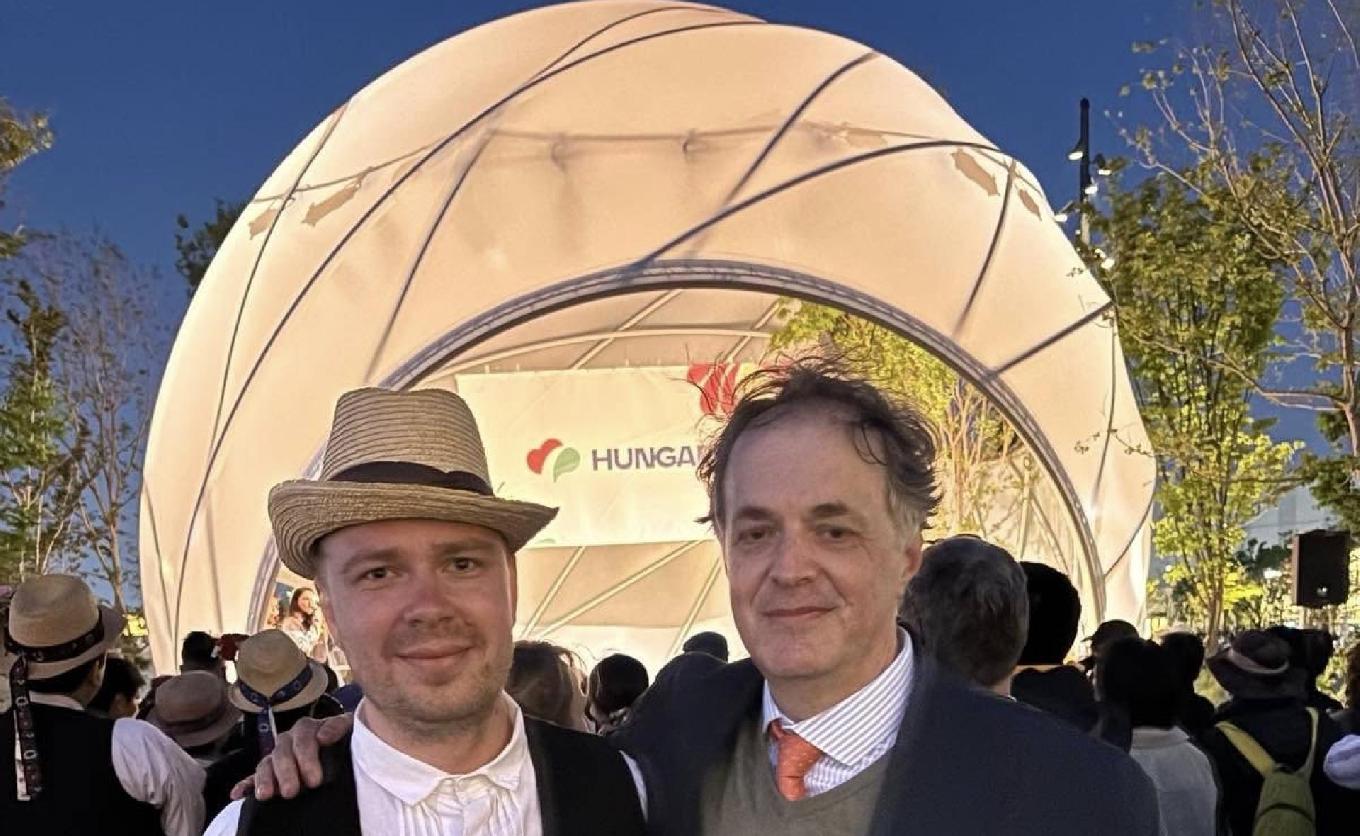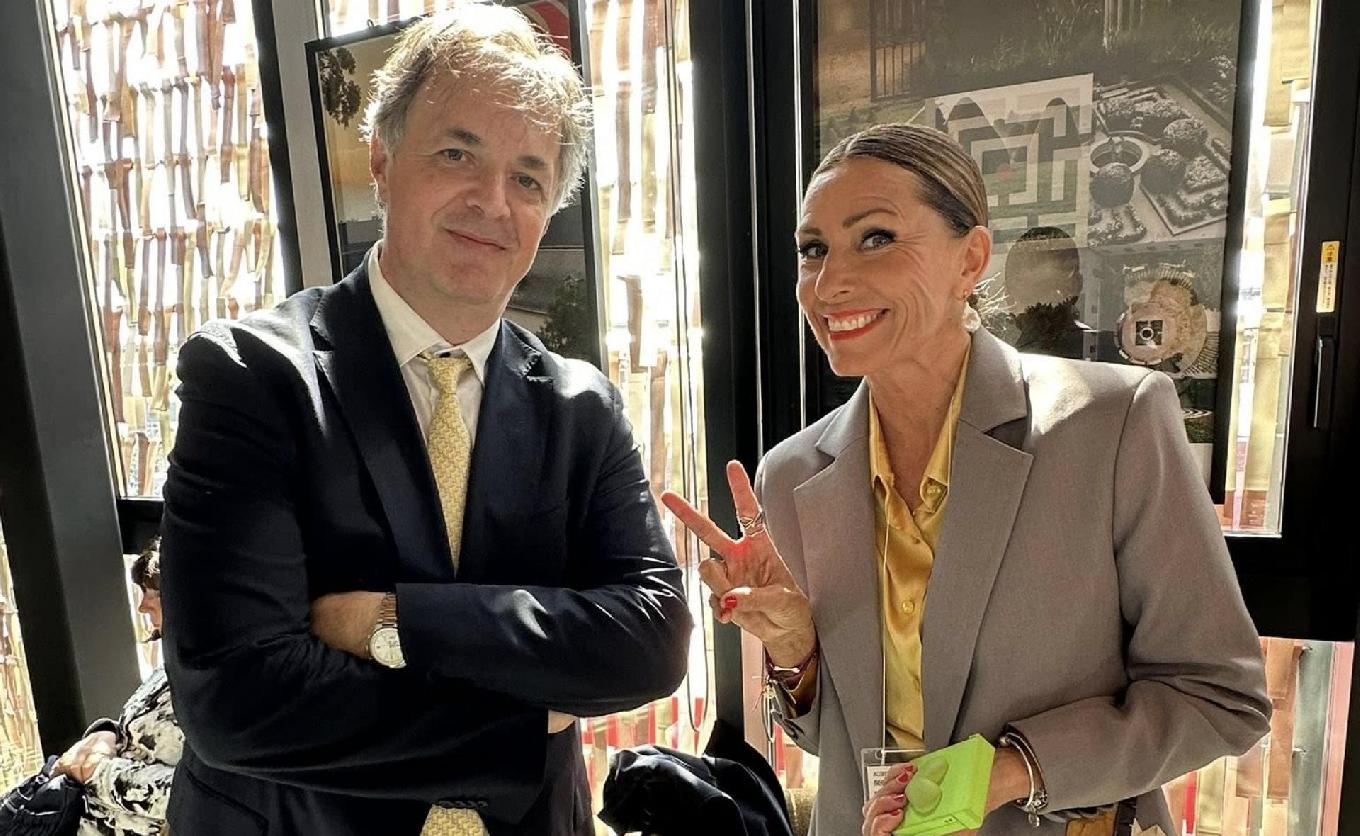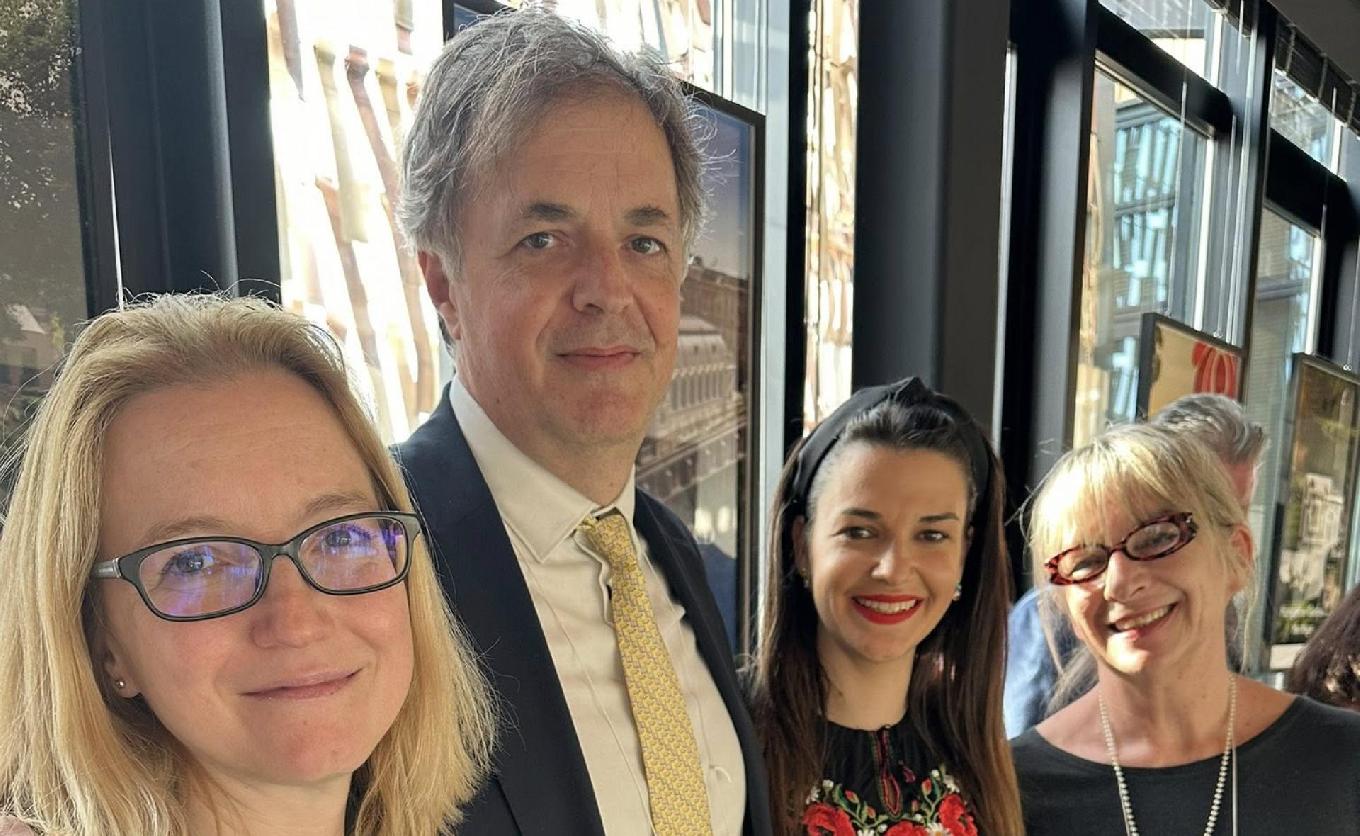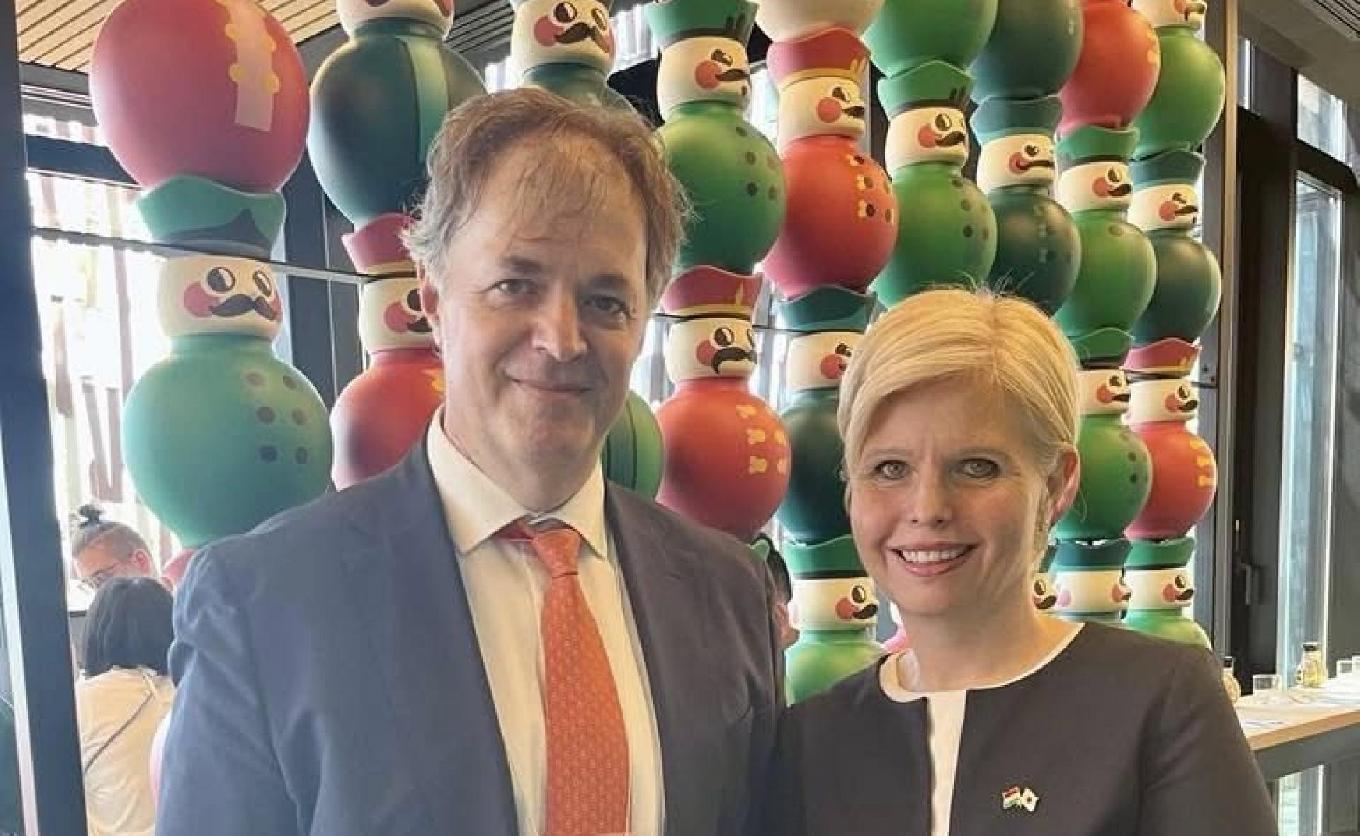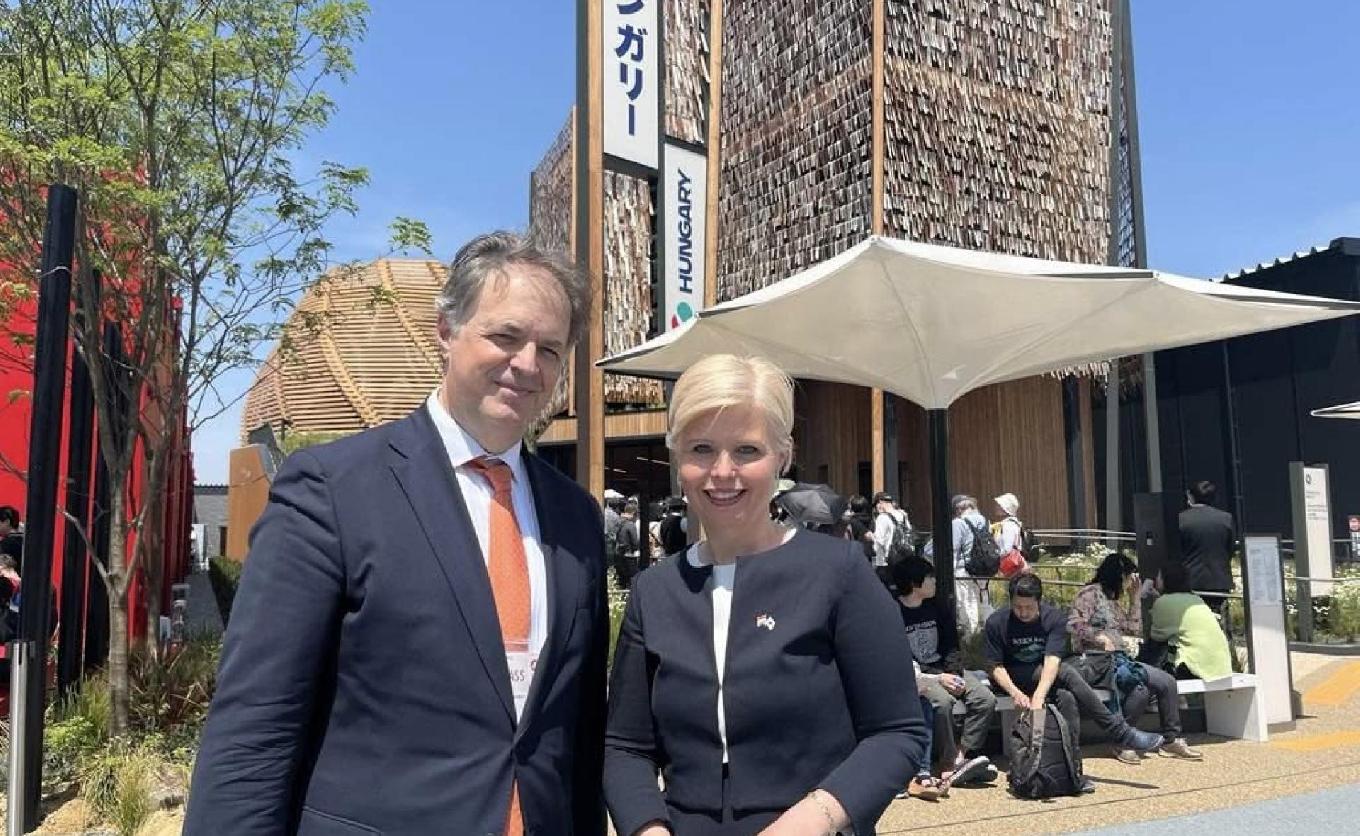
Hungary at the Osaka World Exhibition
A Hungarian Cultural Thematic Days program series took place at the Hungarian Pavilion of the Expo in Osaka from April 28 to 30, 2025, organized jointly by the Ministry of Culture and Innovation and the Ministry of Construction and Transport. The three-day event aimed to offer visitors an insight into Hungary’s rich cultural heritage and the characteristics of contemporary Hungarian culture rooted in tradition. During the three days, world-renowned Japanese guest speakers also visited the Hungarian Pavilion, including architect Sou Fujimoto, founder of Sou Fujimoto Architects, as well as Kazuyo Sejima and Ryue Nishizawa, the heads of the Japanese architecture firm SANAA. Hungarian musical culture was represented by, among others, world-famous opera singer Erika Miklósa and the Timár Folk Dance Ensemble.
The three-day series of events took place during the thematic week titled “Co-Creating Cultures for the Future” at the World Expo and was centered around key areas of Hungarian culture that attract significant international interest, such as architecture, contemporary design, folk culture and preservation of traditions, as well as musical traditions. Through professional lectures, workshops, and cultural showcases, the program brought these aspects of Hungarian culture closer to the international audience.
On April 28, 2025, the Hungarian Pavilion hosted a series of presentations under the theme “Hungarian Architecture and Heritage.” In the morning, a UNI.CO.RE symposium and book launch took place with the participation of faculty members and students from Óbuda University and Osaka University. The presentation analyzed the cities of the future and introduced a publication dedicated to the preservation and development of historic apartment buildings in Pest—an impressive outcome of more than 15 years of Japanese–Hungarian collaborative research. In the afternoon, the Pavilion held a themed architecture session titled “Reviving Hungarian Architecture.” Following the opening remarks by Regő Lánszki, State Secretary for Architecture at the Ministry of Construction and Transport, Kazuyo Sejima and Ryue Nishizawa (SANAA) presented the design of the New National Gallery building to the audience. Attila Turi, President of the Hungarian Academy of Arts, gave a presentation on the activities of the Academy’s public body. He was followed by Dr. Kornél Almássy, Director of the Hungarian Museum of Architecture and Monument Protection Documentation Center, who introduced the New Hungarian Architecture Center and Museum. Sándor Finta, Deputy CEO for Operations and Development at Várkapitányság Nonprofit Zrt., spoke about the National Hauszmann Program and the revitalization of the Buda Castle District and its surroundings. The audience then had the opportunity to listen to Dr. Ágnes Herczeg, President of the Hungarian Garden Heritage Foundation, who gave a lecture titled “Fairy Garden – Hungarian Garden Heritage” on historical gardens in Hungary. The day concluded with a presentation by Zsanett Oláh, CEO of the National Heritage Protection Development Nonprofit Ltd., titled “Respect for Past Ages,” which focused on the developments of the National Castle and Fortress Program.
On April 29, 2025, the Hungarian Pavilion hosted a series of programs under the theme “Tradition and Modernity: Hungarian Design and Folk Culture.” In the morning, Acting Rector Csaba Kovács gave a presentation titled “Designing Our Future” about the Moholy-Nagy University of Art and Design (MOME). In the afternoon, thematic presentations, film screenings, and workshops introduced Hungarian folklore under the title “Hungarian Folk Dance in Japan.” Mihály Timár, Artistic Director of the Timár Ensemble, delivered a lecture on the Hungarian dance-house movement and its Japanese branches, followed by the screening of Hungarian Folk Dance in Japan, a film by Mátyás Timár. Later, a Hungarian folk costume workshop was held, led by Mihály Timár with the participation of members of the Timár Ensemble, followed by a workshop showcasing traditional Hungarian musical instruments, led by Máté Vizeli and Attila Mihó. The day concluded with a performance by the Timár Ensemble.
On April 30, 2025, the Hungarian Pavilion hosted events under the theme “Hungarian Harmonies: Enchanted by Hungarian Music.” In the morning, Gábor Csaba, Deputy State Secretary for Cultural Diplomacy at the Ministry of Culture and Innovation, delivered an English-language presentation on Hungary’s cultural diplomacy system and the global network of Hungarian cultural institutes. He was followed by Krisztina Merényi, Director of the Liszt Institute Tokyo, who gave a Japanese-language presentation on the activities of the Tokyo Liszt Institute and Hungarian–Japanese cultural relations. Attendees were offered a comprehensive overview of the current state and future of cultural ties between Japan and Hungary, as well as the role of culture in fostering dialogue between nations. In the afternoon, Sou Fujimoto, the internationally acclaimed master of contemporary Japanese architecture, gave a special lecture inside the immersive dome of the Hungarian Pavilion. The architect of the House of Music Hungary and the Expo Ring shared with the audience his vision behind the iconic building of Budapest, the inspirational power of City Park (Városliget), and how the harmony between nature and architecture is embodied in his creations. The event was made even more memorable by a joint performance featuring Erika Miklósa, Apor Szüts, and Yosuke Shimizu. This was followed by thematic presentations and showcases under the title “Hungarian Harmonies: Enchanted by Hungarian Music,” highlighting various aspects of Hungary’s musical life. First, András Batta, CEO, and Márton Horn, Director of the House of Music Hungary, gave a presentation on the institution’s artistic and educational activities. The day concluded with a performance by the Quintessence Master School Ensemble. Erika Miklósa, opera singer and founder of the Quintessence Master School, presented her self-developed music education method together with her students. Following this, Gyula Fekete, Vice Rector for International Affairs at the Liszt Ferenc Academy of Music, gave a lecture on the Academy’s activities and international relations, accompanied by a musical performance by cellist Yosuke Shimizu. The program continued with a presentation by Dr. Judit Rajk, Director of the Kodály Institute of the Liszt Ferenc Academy of Music, who spoke about the activities of the Institute in Kecskemét and the contemporary application of the Kodály Method. In the evening, the audience once again enjoyed a performance by the Timár Ensemble on the Outer East Pop-up Stage. The show featured Japanese dancers who had learned Hungarian folk dance in Japan using the method developed by Sándor Timár, the legendary dance educator of the 20th century. The performance was met with great acclaim, the Timár Method has been connecting nations and cultures for decades.
Thanks to the three-day event series organized by the Ministry of Culture and Innovation and the Ministry of Construction and Transport, visitors were able to discover Hungary’s rich heritage and its contemporary, living expressions through the worlds of music, craftsmanship, dance, contemporary design, and architecture. In addition to professionals and representatives of the cultural sector, the thematic programs also attracted visitors interested in culture who wished to explore the unique features of Hungarian culture through the dialogue between tradition and innovation. Hungarian culture is not only represented in Japan, but also serves as a true bridge between nations, institutions, and people.

